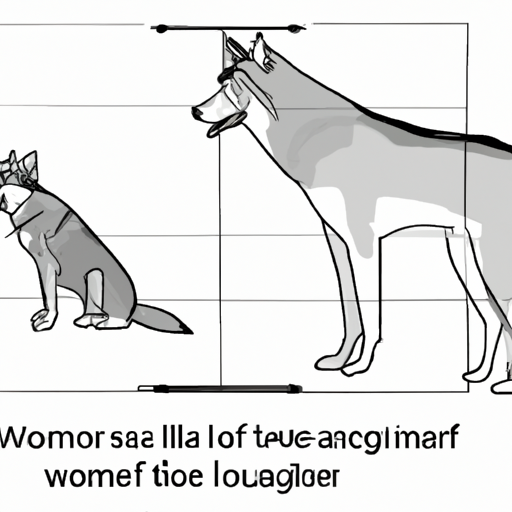If you have ever seen a wolf dog, you may have found yourself in awe of its majestic appearance. These animals are a hybrid breed that combines the domesticated dog’s traits with the wild wolf’s characteristics. Wolf dogs are known for their intelligence, strength, and, of course, their size. But how big do wolf dogs get? Let’s dive into this topic and explore the fascinating world of wolf dogs.
- Understanding Wolf Dogs
- How Big Do Wolf Dogs Get?
- Factors That Affect the Size of Wolf Dogs
- Taking Care of Your Wolf Dog
-
Wolf dogs, as their name suggests, are a crossbreed between wolves and dogs.
- The size of wolf dogs can vary significantly, ranging from 60 to 200 pounds.
- Many factors, including breed, genetics, and nutrition, can influence a wolf dog’s size.
- Wolf dogs require special care and attention due to their unique needs.
Understanding Wolf Dogs
Wolf dogs are not purebred dogs or wolves; they are a hybrid of the two. The percentage of wolf genes a wolf dog has can significantly vary, affecting their size, temperament, and behavior. This source offers extensive information on the genetic makeup of wolf dogs.
Here’s a table showing different wolf dog breeds and their typical weight range:
| Wolf Dog Breed | Weight Range |
|---|---|
| Czechoslovakian Wolfdog | 44-57 pounds |
| Saarloos Wolfdog | 79-90 pounds |
| Lupo Italiano | 66-110 pounds |
How Big Do Wolf Dogs Get?
Wolf dogs can significantly vary in size. The smallest wolf dogs can weigh as little as 60 pounds, while the largest can reach a staggering 200 pounds. Height-wise, they can stand anywhere from 26 to 34 inches tall at the shoulder. This informative guide on wolf dogs provides a more detailed insight into their size and other attributes.
Factors That Affect the Size of Wolf Dogs
Several factors can influence the size of a wolf dog:
-
Breed: As seen in the table above, different breeds of wolf dogs can have varying sizes.
-
Genetics: The specific combination of wolf and dog genes a wolf dog inherits can significantly affect its size. A wolf dog with a higher percentage of wolf genes may be larger than one with more dog genes.
-
Nutrition: Proper nutrition is crucial for a wolf dog’s growth and development. A well-balanced diet can ensure your wolf dog reaches its maximum potential size.
-
Health: Certain health issues can stunt a wolf dog’s growth, preventing it from reaching its full size.
Taking Care of Your Wolf Dog
Wolf dogs are unique pets that require special care and attention. Given their size and energy levels, they need ample space to roam and play. Regular exercise is essential, as is a diet that meets their nutritional needs.
Understanding your wolf dog’s behavior and needs can be a challenge. Fortunately, resources like this wolf dog care guide can prove invaluable. Another useful resource is this wolf dog training guide which provides tips and techniques for training your pet.
Frequently Asked Questions
1. How big do wolf dogs get?
Wolf dogs can range significantly in size, with weights ranging from 60 to 200 pounds and heights ranging from 26 to 34 inches at the shoulder.
2. What factors affect a wolf dog’s size?
Several factors, including breed, genetics, nutrition, and health, can influence a wolf dog’s size.
3. How can I take care of my wolf dog?
Wolf dogs require ample space, regular exercise, a balanced diet, and regular vet check-ups. Training can also help manage their behavior.
In conclusion, the size of a wolf dog can vary greatly. As a potential or current wolf dog caregiver, understanding these majestic creatures’ needs is crucial to their well-being. With the right care, your wolf dog can lead a healthy, happy life.



